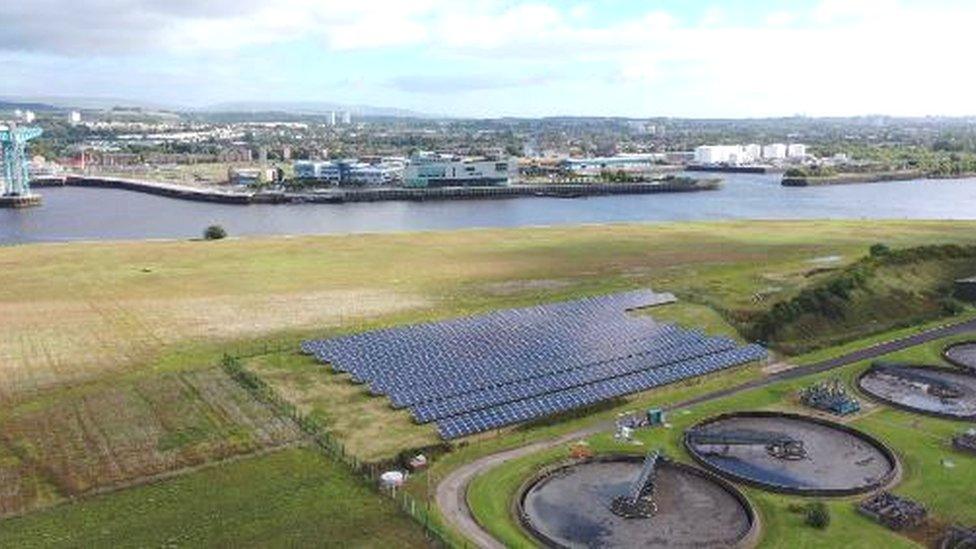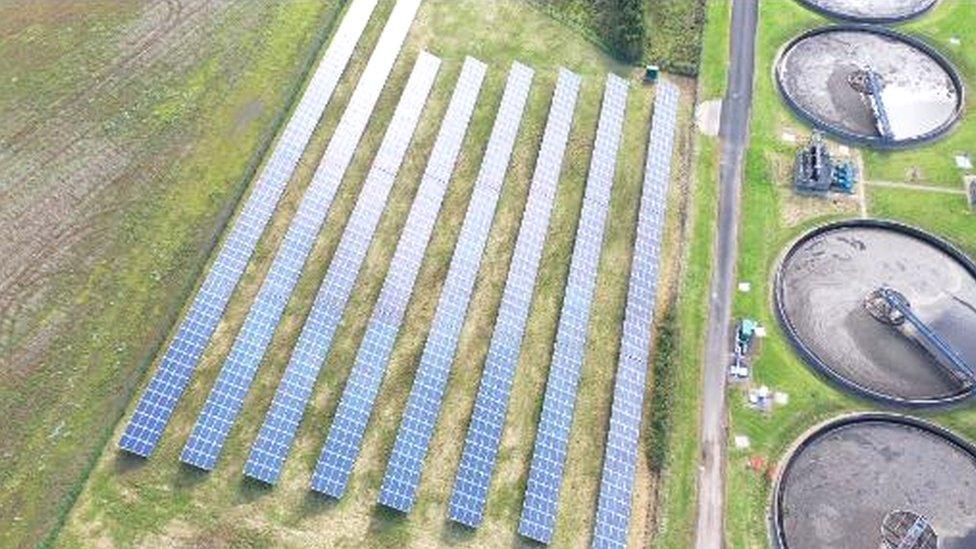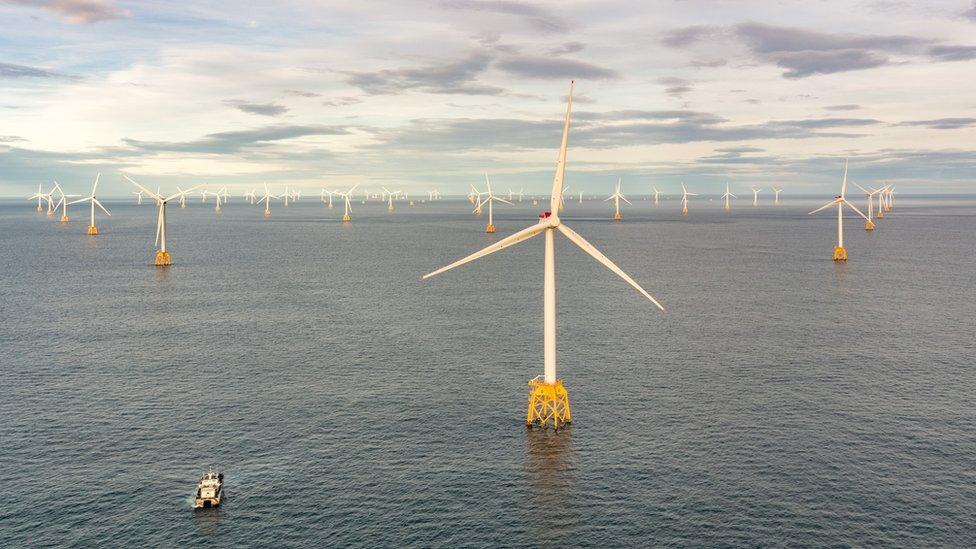Scottish Water sets out renewables route map to net-zero emissions
- Published

The Erskine waste water treatment works are being redesigned to be powered by solar panels
More renewable energy, tree planting and peat bog restoration will help Scottish Water reach net-zero by 2040, the organisation has said.
Scotland's biggest user of energy has set out its plan for decarbonising five years ahead of the government's target.
It says a huge shift to green electricity requires major investment and bills will have to go up.
It comes as the Scottish government sets out legislation requiring public bodies to set net-zero target dates.
More than a billion litres of water is consumed daily in Scotland and shifting it around uses lots of energy.
The whole operation generates about 250,000 tonnes of carbon dioxide (equivalent) - the same as 40,000 car journeys around the world.
But already some sites, like the Erskine waste water treatment works, are being redesigned to be powered by solar panels.
Others facilities are being replaced with ones using more efficient treatment methods.
Scottish water operates 239 drinking water treatment works and 1,827 waste water sites across Scotland.

It plans to power all of them from renewables within the next 20 years.
Chief executive Douglas Millican said: "This will not be easy. We have a substantial emissions footprint due to the large amounts of electricity and chemicals we use.
"This route map is about doing everything possible to minimise the emissions associated with our activities, irrespective of where they are generated, and maximise the positive contribution we can make."
Ministers have laid legislation before parliament requiring public bodies to set a date for reaching net-zero.
The law will cover the Scottish government, local authorities and organisations like Police Scotland and the fire service.
'Constructive challenge'
They will also each have to demonstrate how they intend to achieve the target.
Environment Secretary Roseanna Cunningham said: "All public sector organisations will know that this is coming and I'm hoping that they're going to treat it as a constructive challenge that they will all rise to.
"I know Scottish Water is speaking to other agencies about how they've come to the proposals that they've set out and other organisations will be considering whether they have some of the same advantages that Scottish Water does have in this regard."

The Inverurie waste water treatment site in Aberdeenshire has been rebuilt to incorporate new techniques which clean the water using less energy
Scottish Water owns a significant amount of land across the country, equal to an area 1.5 times the size of Clackmannanshire.
It says it will increase tree planting to offset some of its emissions, improve the quality of the peatlands it owns and increase the amount of solar panels and wind turbines.
The organisation says it has already seen a 45% reduction in operational emissions since 2007 with 53GWh of renewable energy produced annually on its sites.
It plans to increase that figure - with 2007 as the baseline - to 60% by 2025 and 75% by 2030.
- Published18 December 2020

- Published12 August 2019
